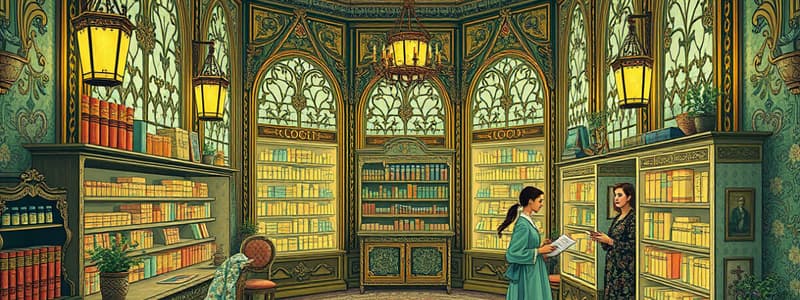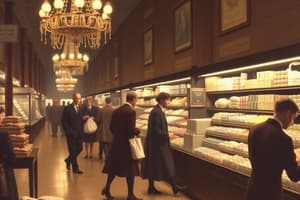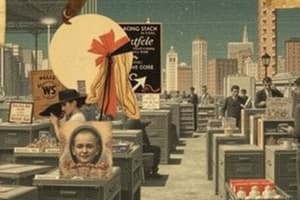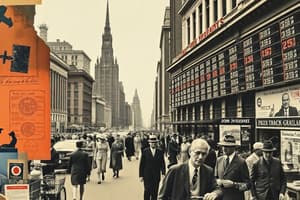Podcast
Questions and Answers
What characterized consumer culture in the 1920s?
What characterized consumer culture in the 1920s?
- People purchased nonessential goods on a regular basis. (correct)
- Consumerism declined.
- People purchased essential goods.
- People mostly saved their money.
What was a reason consumerism increased in the 1920s?
What was a reason consumerism increased in the 1920s?
Many working people earned more money.
During what years did consumerism cause the stock market to grow most?
During what years did consumerism cause the stock market to grow most?
1924-1929
Who was the US president connected to the Teapot Dome Scandal?
Who was the US president connected to the Teapot Dome Scandal?
Why was the land called Teapot Dome in Wyoming valuable?
Why was the land called Teapot Dome in Wyoming valuable?
How did the growth of credit affect the stock market in the 1920s?
How did the growth of credit affect the stock market in the 1920s?
What was an important feature of consumerism in the 1920s?
What was an important feature of consumerism in the 1920s?
While consumerism during the 1920s boosted the economy, what was one negative effect?
While consumerism during the 1920s boosted the economy, what was one negative effect?
What did President Harding's economic policies contribute to during the 1920s?
What did President Harding's economic policies contribute to during the 1920s?
In the 1920s, what reflected the weakening economy?
In the 1920s, what reflected the weakening economy?
What did Calvin Coolidge's economic policies during the early 1930s help people forget about?
What did Calvin Coolidge's economic policies during the early 1930s help people forget about?
Flashcards are hidden until you start studying
Study Notes
Consumer Culture of the 1920s
- Nonessential goods became popular purchases among consumers, indicating a shift in spending habits.
- Increased disposable income for many workers led to a rise in consumerism.
Economic Growth and the Stock Market
- The stock market experienced significant growth from 1924 to 1929 due to rising consumerism.
- Credit growth allowed investors to buy stocks on margin, further boosting stock market prices.
Teapot Dome Scandal
- Warren G. Harding, as President, had economic policies tied to this major scandal involving corrupt leasing of federal oil reserves.
- The Teapot Dome area in Wyoming became significant for its oil production, contributing to the scandal's economic implications.
Advertising and Consumerism
- Manufacturers actively advertised goods, playing a critical role in the consumerism movement of the 1920s.
- The push for advertising led to greater consumption but also contributed to rising personal debt levels.
Economic Disparities
- The 1920s reflected a widening gap between the affluent and the impoverished, signaling economic inequality.
- Harding's policies fostered an environment that promoted consumerism but did not address the disparities in wealth.
Legacy of Economic Policies
- Calvin Coolidge's policies in the early 1930s served as an attempt to divert attention from the negative fallout of the Teapot Dome Scandal, impacting public perception.
Studying That Suits You
Use AI to generate personalized quizzes and flashcards to suit your learning preferences.




